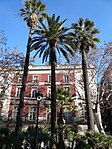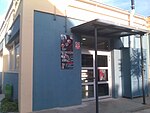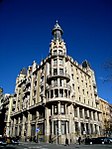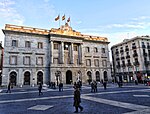Pompeu Fabra University

Pompeu Fabra University (Catalan: Universitat Pompeu Fabra, UPF, pronounced [uniβəɾsiˈtat pumˈpɛw ˈfaβɾə]; Spanish: Universidad Pompeu Fabra) is a public university located in the city of Barcelona, Catalonia in Spain. The university was created by the Autonomous Government of Catalonia in 1990, and was named after Pompeu Fabra, a Catalan engineer, grammarian and the main author of the normative reform of contemporary Catalan language. In 2021, UPF was ranked the best university in Spain and 10th best young university in the world by the Times Higher Education World University Rankings.Pompeu Fabra University is considered one of the most prestigious universities in Spain. It has occupied first place in the national ranking of scientific productivity since 2009. Academically, the university is known for its selective student admission as more than half of the degrees offered by it have among the highest university entrance grades (selectividad) in the Catalan university system. The university excels in national and international rankings especially in the studies of economics, political science, and law. The studies in the field of Economics at UPF have been ranked among the top 50 worldwide, occupying the 20th place in Economics and Econometrics in the QS World University Rankings by subject in 2016 and 40th place in Economics & Business in the Times Higher Education Rankings. The university's Faculty of Economics and Business Sciences is the first and only faculty in Spain (public or private and for any discipline) to be awarded the Certificate for Quality in Internationalization granted by a consortium of 14 European accreditation agencies. UPF was designated as an "International Excellence Campus" by the Spanish Ministry of Education in 2010.
Excerpt from the Wikipedia article Pompeu Fabra University (License: CC BY-SA 3.0, Authors, Images).Pompeu Fabra University
Carrer Louis Braille, Barcelona
Geographical coordinates (GPS) Address Nearby Places Show on map
Geographical coordinates (GPS)
| Latitude | Longitude |
|---|---|
| N 41.379166666667 ° | E 2.1797222222222 ° |
Address
UPF. Rectorat
Carrer Louis Braille
08001 Barcelona (Ciutat Vella)
Catalonia, Spain
Open on Google Maps









